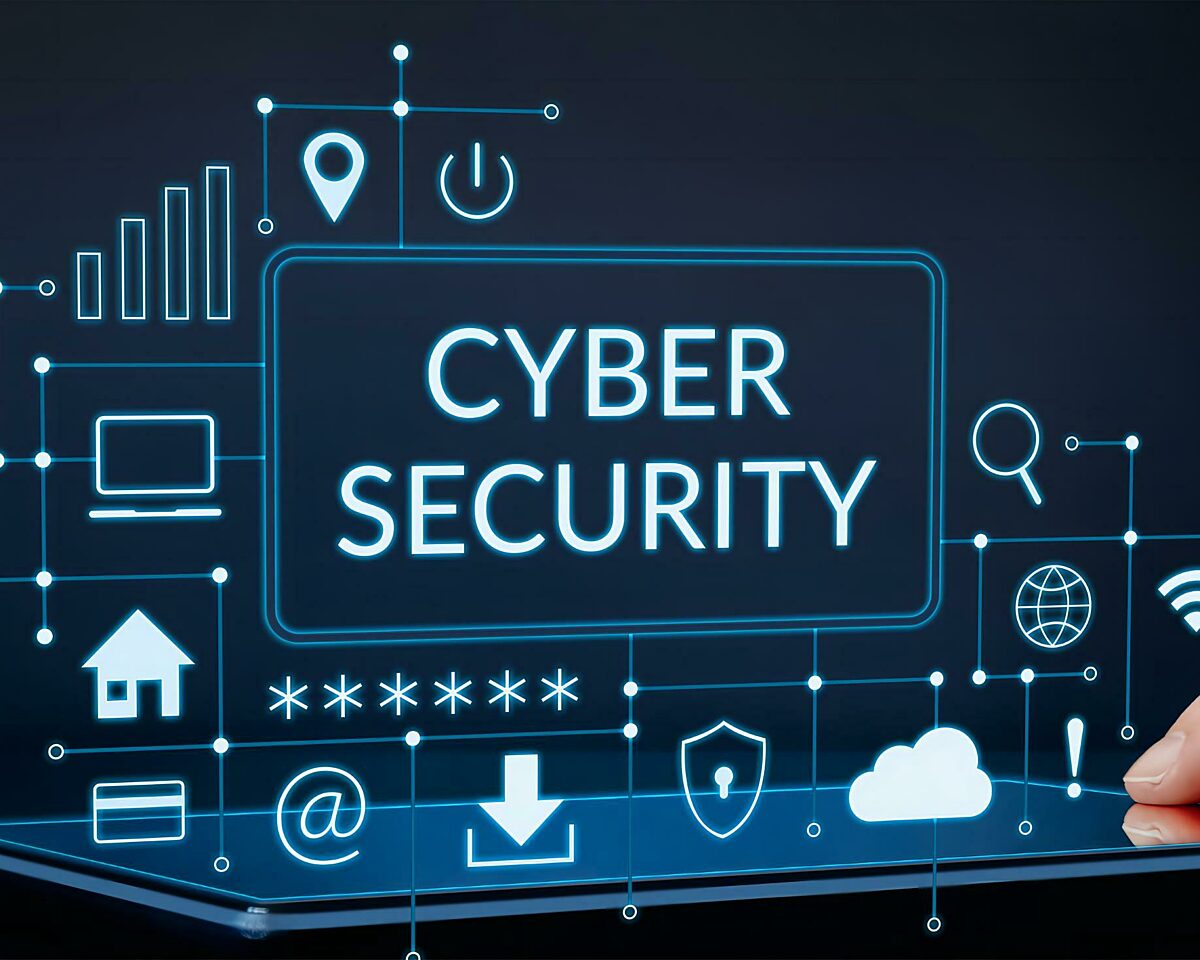Welcome to the digital era, where technology has become an integral part of our lives. From online shopping and social media to remote work and banking apps, we rely on digital platforms for almost everything. While this convenience offers countless benefits, it also exposes us to a lurking danger – cyber threats.
In today’s interconnected world, cybersecurity has become more crucial than ever before. Whether you’re an individual browsing the web or a business handling sensitive data, staying protected against malicious attacks is paramount. So, let’s dive into the essential guide that unveils the truth about cybersecurity in our digital landscape. Get ready to arm yourself with knowledge and take control of your online safety!
Understanding Cybersecurity: What It Is and Why It’s Important
In this rapidly evolving digital world, understanding cybersecurity is crucial for protecting ourselves and our valuable information from cyber threats. Simply put, cybersecurity refers to the measures taken to safeguard computers, networks, and data from unauthorized access or damage.
Cybersecurity encompasses a wide range of practices that aim to secure our digital environment. It involves implementing firewalls, antivirus software, encryption techniques, and other advanced technologies to create layers of defense against potential attacks. Additionally, it also entails educating users about safe online practices and promoting awareness about common vulnerabilities.
But why is cybersecurity so important? Well, the consequences of a successful cyber attack can be devastating. From financial losses due to fraud and theft to reputational damage caused by data breaches – the impact can be far-reaching. Cybersecurity not only protects sensitive personal information but also ensures business continuity by safeguarding critical systems and infrastructure.
Moreover, with the rise in remote work culture and cloud-based storage solutions, cybersecurity has become even more essential. As we increasingly rely on technology for communication and collaboration purposes, any breach in security poses significant risks both at an individual level as well as at an organizational level.
So remember: understanding cybersecurity is not just an option; it’s a necessity in today’s digital landscape. By equipping ourselves with knowledge about potential threats and implementing robust security measures proactively, we can minimize the risks associated with operating in cyberspace. Stay tuned as we delve further into this comprehensive guide on how you can protect yourself against common cyber threats!
Common Cyber Threats in Today’s Digital World
In today’s interconnected world, where technology reigns supreme, cyber threats have become a pervasive and ever-present danger. From individuals to large corporations, no one is immune to the potential risks that lurk in cyberspace. Understanding these common cyber threats is essential for safeguarding sensitive information and maintaining digital security.
One of the most prevalent cyber threats is malware, malicious software designed to infiltrate computer systems and cause harm. Whether it’s through email attachments or infected websites, malware can wreak havoc on your devices by stealing personal data or rendering them useless.
Phishing attacks are another common threat that preys on unsuspecting users’ trust. These scams typically involve fraudulent emails or messages disguised as legitimate entities such as banks or government agencies. The goal is to trick recipients into divulging confidential information like passwords or credit card details.
Ransomware has also emerged as a major concern in recent years. This type of attack encrypts valuable files on a victim’s device and holds them hostage until a ransom is paid. The consequences can be devastating for both individuals and businesses alike if critical data falls into the wrong hands.
Another growing menace is social engineering, which relies on manipulating human psychology rather than exploiting technical vulnerabilities. By leveraging techniques like deception and persuasion, hackers can gain unauthorized access to secure networks or extract sensitive information from unsuspecting victims.
To mitigate these threats effectively, individuals must stay vigilant by practicing good cybersecurity habits such as regularly updating software, using strong passwords, and being cautious when clicking links or sharing personal information online.
Businesses should also invest in robust cybersecurity measures like firewalls, intrusion detection systems (IDS), encryption protocols, employee training programs about phishing awareness and incident response plans to defend against potential attacks effectively.
As technology continues to evolve at an unprecedented rate, so do cyber threats. Staying informed about emerging trends in the cybersecurity landscape will help ensure you stay one step ahead of potential threats and safeguard your digital presence.
Securing Business Data: Best Practices for Companies
In today’s digital world, data is the lifeblood of businesses. From customer information to trade secrets, companies rely on their data for operations and competitive advantage. However, with cyber threats becoming more sophisticated, ensuring the security of business data has become essential. Here are some best practices that companies can implement to protect their valuable information.
1. Implement a robust cybersecurity framework: A comprehensive cybersecurity framework should be in place to address all aspects of data protection. This includes policies and procedures for user access controls, encryption, network security measures, regular backups, and incident response plans.
2. Educate employees about cyber risks: Employees can unknowingly expose sensitive data through simple actions like clicking on malicious links or falling prey to phishing scams. Regular training sessions on cybersecurity awareness can help employees understand potential risks and how to avoid them.
3. Use strong passwords and multi-factor authentication: Weak passwords are an open invitation for hackers. Encourage employees to use complex passwords that include a combination of letters (upper and lower case), numbers, and symbols. Additionally, implementing multi-factor authentication adds an extra layer of security by requiring additional verification steps.
4. Regularly update software and systems: Outdated software often contains vulnerabilities that can be exploited by hackers. It is crucial to keep all systems up-to-date with the latest patches and security updates provided by software vendors.
5. Enforce strict access controls: Limiting access rights ensures that only authorized personnel have permission to view or modify sensitive data within the organization’s network or systems.
6. Backup important data regularly: In case of a breach or system failure, having regular backups ensures that critical business information can be restored without significant disruption.
7. Monitor network traffic continuously : By actively monitoring network traffic patterns , abnormal activities such as unauthorized access attempts or suspicious behavior can be detected early on , allowing swift action before any real damage occurs .
By following these best practices, companies can significantly reduce the risk of data breaches and safeguard their valuable information
Latest Trends and Technologies in Cybersecurity
As technology continues to advance at a rapid pace, so do the threats in the digital world. Cybercriminals are constantly devising new ways to exploit vulnerabilities and gain unauthorized access to sensitive information. It is crucial for individuals and organizations alike to stay updated on the latest trends and technologies in cybersecurity in order to protect themselves from these evolving threats.
One of the key trends in cybersecurity is the increasing emphasis on artificial intelligence (AI) and machine learning (ML). These technologies have proven to be effective in detecting and preventing cyber attacks by analyzing vast amounts of data and identifying patterns that may indicate malicious activity. AI-powered systems can detect anomalies in real-time, allowing for faster response times and more proactive defense strategies.
Another trend gaining traction is the use of blockchain technology for enhanced security. Blockchain provides a decentralized system where transactions are recorded across multiple nodes, making it extremely difficult for hackers to manipulate or tamper with data. Its transparency and immutability make it an appealing solution for securing sensitive information such as financial records or personal identities.
Cloud-based security solutions are also becoming increasingly popular among businesses. With cloud computing, companies can store their data offsite, reducing their reliance on physical infrastructure while benefiting from advanced security measures implemented by cloud service providers. This allows organizations to focus more on their core business activities while having peace of mind knowing that their data is protected against potential breaches.
Mobile device security has become a major concern as well due to the widespread use of smartphones and tablets. As these devices continue to hold large amounts of personal information, protecting them from theft or unauthorized access has become imperative. Mobile device management (MDM) software offers features like remote locking or wiping capabilities, ensuring that lost or stolen devices cannot be easily compromised.
In addition, there is increased awareness around user behavior analytics (UBA), which analyzes individual users’ actions within a network environment. By monitoring user behavior patterns, UBA can detect abnormal actions that may indicate a compromised account or unauthorized access. This helps organizations identify potential insider threats and take
Conclusion: Taking Action for a More Secure Future
In today’s digital world, cybersecurity has become an essential aspect of our lives. From protecting personal information to safeguarding sensitive business data, the need for robust security measures has never been more critical. As technology continues to advance and cyber threats evolve, it is crucial for individuals and businesses alike to take proactive steps in securing their digital assets.
Understanding the concept of cybersecurity is the first step towards creating a safer online environment. By recognizing its importance and staying informed about common cyber threats, we can better protect ourselves from potential attacks. This knowledge empowers us to make smarter decisions when it comes to sharing personal information or interacting with unknown sources online.
For companies especially, implementing best practices and investing in comprehensive cybersecurity solutions is paramount. Regularly updating software systems, conducting employee training programs on safe internet usage, and employing multi-factor authentication are just some examples of how organizations can fortify their defenses against cyber threats. It is also crucial that businesses stay up-to-date with the latest trends and technologies in the field of cybersecurity to ensure they remain one step ahead of potential attackers.
Fortunately, advancements in cybersecurity have paved the way for innovative technologies that aid in combating evolving threats. Machine learning algorithms can detect patterns indicative of malicious activities while blockchain technology provides enhanced data integrity and transparency. Embracing these new tools allows us to not only defend against existing threats but also anticipate future ones.
Taking action now means securing a more resilient future where our digital lives are protected from harm. By prioritizing cybersecurity at both individual and organizational levels, we can create a safer online ecosystem where trust becomes the foundation upon which technology thrives.
So let’s remain vigilant, educate ourselves about cyber risks, implement robust security measures, adopt emerging technologies when appropriate – all with an eye toward building a more secure future for ourselves and generations to come.

